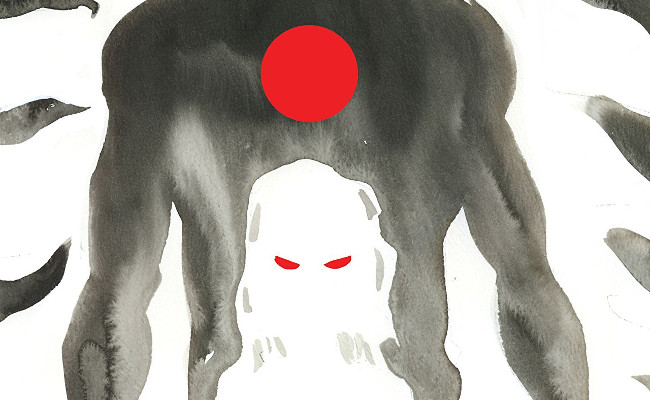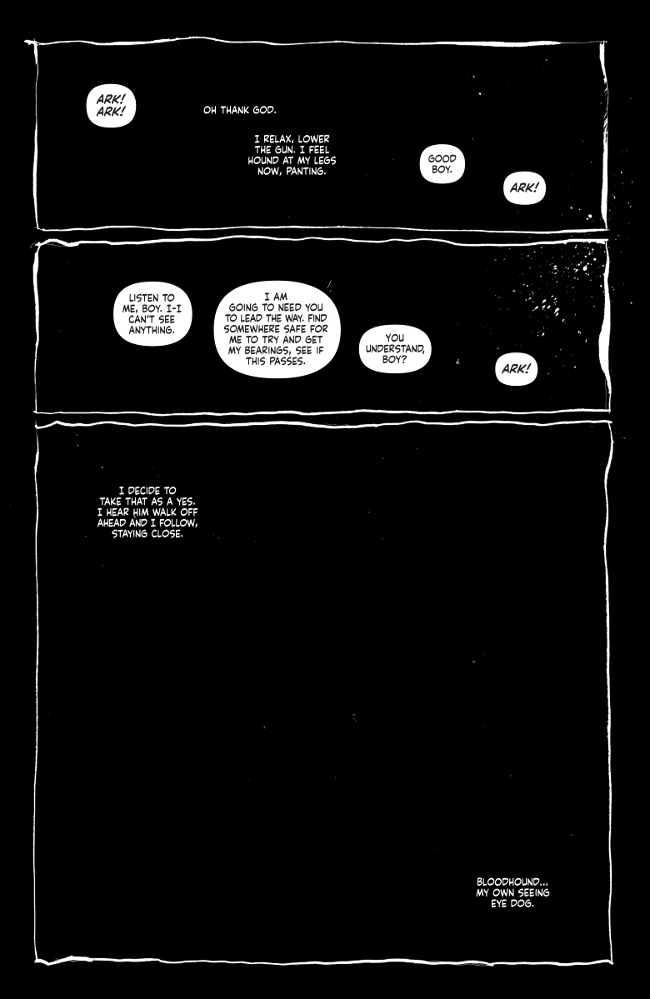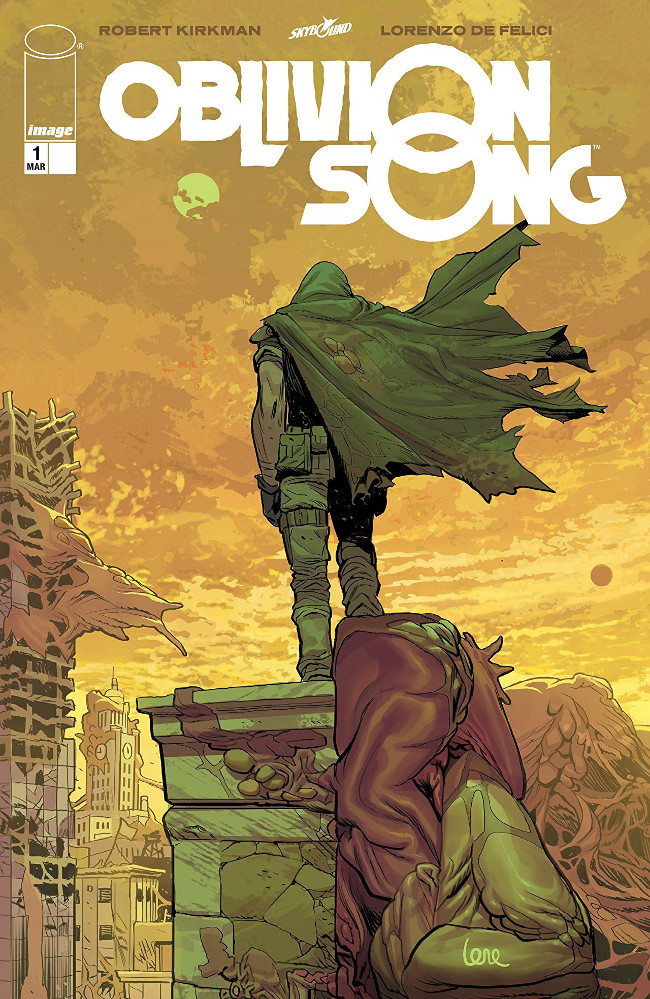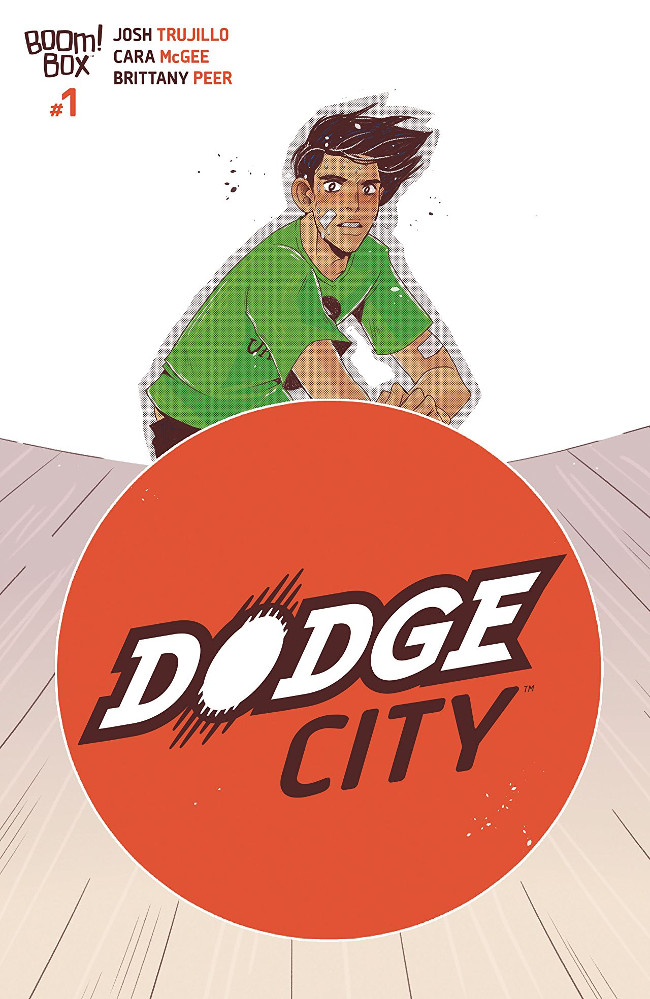
Jeff Lemire’s work on Valiant’s Bloodshot, the latest being this week’s Bloodshot Salvation #7, has been fascinating, turning what was a standard he-man anti-hero from the ’90s into a more complicated character. It’s not what you’d expect from his independent work, like Royal City or The Underwater Welder, which are often focused on the personal. But the book sitll shows just how skilled he is as a storyteller, by taking art, if not artistry, completely out of the equation.
Bloodshot, the supersoldier essentially held together with tiny robots called nanites, is in the Deadside, the afterlife of the Valiant universe, to save his baby daughter. One small problem: His nanites don’t work, at least at the moment, in this magical realm, leaving him blind. So almost the entire book, with the exception of a final splash panel by Renato Guedes, is told in the dark. It’s just text, some lines to delineate panels, and editing, with no artwork, just page after page of black:

Yes, it’s a bit of a stunt. But it works, in part because Lemire is careful to put narrative first and to use layout creatively. You can still follow the terse story, told in handfuls of words, like it’s a comic. It uses the same grammar and style. There’s just no art. And yet, it not only works, it’s arguably more effective than if you could see what was happening. When Bloodshot realizes what the ground’s made of, when he stumbles into a trap, it’s gripping. This minimalist experiment can’t carry a whole series, of course, but if you want to see a master of the form at work, this is the book to read.

Oblivion Song #1, Image Comics
Robert Kirkman and Lorenzo De Felici put just enough of a twist on a classic plot — a city abandoned to an alien invasion — to feel fresh. Nathan has not given up on the residents of Philadelphia who experienced a mysterious “transference” years ago, with alien life running riot through it. Patiently, block by block, day by day on his own, he’s been searching, saving the living, gathering the records of the dead, in the face of a public that’s decided to just move on and leave anybody who may be alive to their fate. Nathan is hoping to find his brother Ed, but of course, he finds a lot more than that. De Felici’s gooey aliens and fluid cartooning give this book a pleasant old-school feel, while the emotional depth is just enough to make this more than an adventure book.
Iceman #11, Marvel
Sina Grace ends his wonderful solo book about Bobby Drake with a thinly veiled metaphor about coming out by having Iceman deal with a mutant who can’t quite accept who he is. It’s not very subtle, but it’s not intended to be, and it works in part because Grace, working with Robert Gill, contrasts it with excerpts from Bobby’s life (complete with the art style of the various X-eras) that show he’s never been entirely comfortable with being either a mutant or a gay man, and how those feelings have entwined. It’s the perfect send-off for a book that’s gone too soon.
Gideon Falls #1, Image Comics
Jeff Lemire and Andrea Sorrentino make for a great team, as they proved on Green Arrow and Old Man Logan. Here, though, they step away from superheroics for a supernatural chiller. Father Tom moves to the titular town to take over its church, while Norton, an obsessive-compulsive, lives seemingly a world away in a big city. But the two are being drawn together because something lurks in Gideon Falls. Sorrentino stands out here, showing off some stylish layouts and clever photorealistic work, and this team together is always worth picking up.
Green Hornet #1, Dynamite
The Green Hornet has a great hook: He’s not a superhero, but rather, at least to the world at large, a mysterious gangster going around taking his cut from crooks. Amy Chu and German Erramouspe ask a question: If the Green Hornet disappears, who takes his turf? And who will wind up having to fill in for Britt Reid? Erramouspe’s jagged, shadowy art lends itself well to the theme, and Chu’s riff on the concept, and who winds up wearing the coat, gives a pulp hero a welcome twist.

Dodge City #1, BOOM! Studios: Tomas, the new kid, joins what he thinks is an innocent dodgeball league and stumbles over something a bit more than he bargained for in this charming launch from Josh Trujillo, Cara McGee, and Brittany Peer.
She-Hulk #163, Marvel: Mariko Tamaki and Diego Orlotegui finish up Tamaki’s wonderful run with an upbeat story about the importance of not running from who you are, no matter how much it angers others.
Prism Walker #1, Image Comics: Sloane Leong’s trippy science fiction tale looks great, although it may take a few pages to figure out what’s going on.
The Wild Storm #12, DC Comics: Warren Ellis and Jon Davis-Hunt deliver a dryly funny issue where everything goes wrong at once for pretty much everybody, which is a problem when “everybody” are the two secret conspiracies that run the world.
The Ballad Of Sang #1, Oni Press: Ed Brisson and Alessandro Micelli offer a fun take on the assassin out for revenge as a teenager sets out to take revenge for his dead master in modern-day Manilla… and the gangster who killed said master would really like his arm back.
This Week’s Best Collections

March Of The Crabs Vol. 3, BOOM! Studios ($20, Hardcover): Arthur De Pins’ heavily metaphorical story about crabs trying to evolve, and how crab society freaks out, offers up a final, thoughtful volume.
Safe Area Gorzade, Fantagraphics ($25, Softcover): Joe Sacco’s Eisner-award winning work of journalism in comics form is still a potent discussion of the tragic, brutal civil war in the former Yugoslavia.
Scud The Disposable Assassin: The Whole Shebang, Image Comics ($35, Softcover): Rob Schrab’s wacky indie comic has had a strange influence on pop culture, and if you’re wondering about the seeds of shows like Community and Rick and Morty, this is part of how they came to be.






